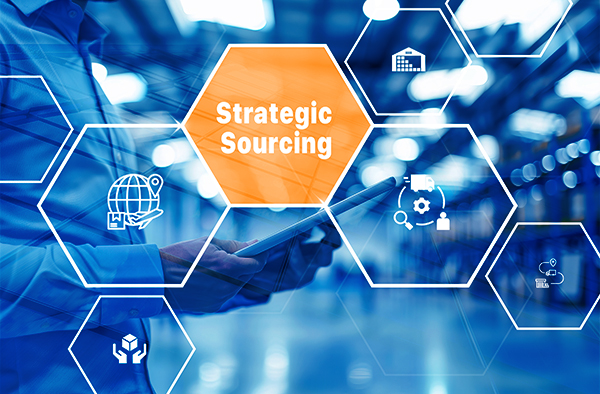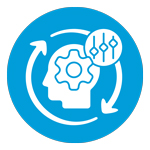A New Era of Strategic Sourcing: Transform Your Organization’s Practices

Strategic sourcing continues to evolve as companies navigate new markets, technological advancements and evolving global economic patterns.
We’ve reached a new era of strategic sourcing, fueled by advancing technology and evolving customer expectations.
An outdated, siloed approach is no longer viable. To tackle immediate risks and establish a lasting competitive advantage, it’s crucial to proactively build a comprehensive framework that emphasizes agility and resilience, sustainability and ethical sourcing.
With an eye to the future, organizations can find success by translating evolving customer demands into practical strategies. These include key areas such as:

Agility and resilience in risk management strategies with a focus on flexible service offerings, proactive planning and customer-centric design.

Sustainable and ethical sourcing to minimize adverse environmental and social effects, facilitate compliance and improve brand reputation.

Human-centric sourcing that emphasizes diversity and inclusion, innovation and collaboration, and in-demand skills like data analytics, sustainability and risk management.
The future success of strategic sourcing hinges on a company’s ability to transform current disruptions into proactive responses and convert challenges into competitive opportunities.
How We Got Here: The Evolution of Strategic Sourcing in Three Phases
From its emergence in the 1950s to today, the focus of strategic sourcing has evolved through three distinct phases:
1950s to 1990s
When strategic sourcing emerged in the mid-20th century, its initial focus was on securing the best product deals. During this phase, that focus shifted from negotiating the price of a product to the total cost of the product (total cost of ownership, or TCO). Increased globalization, complex supply chains, and a rising awareness of hidden costs drove this transition.
2000s to 2020
While the early 2000s were marked by the enthusiastic adoption and integration of technology, the focus was solely on technology itself, leveraging its potential to streamline processes and gain visibility.
Over time, the emphasis shifted towards forging a crucial link between technology and the company’s portfolio earnings. This shift necessitated the consideration of success metrics that reflected cost optimization, overall operational efficiency, long-term supplier relationships and data-driven transparency.
2020s and beyond
Today, we are in a new phase of strategic sourcing where risk management and sustainability stand alongside TCO as defining priorities. Technology fuels this evolution, simplifying powerful tools like machine learning and AI for wider accessibility.
Understanding the changing role of technology within strategic sourcing can help organizations leverage it for optimal operational efficiency. Future technologies will need to demonstrate tangible real-world applications to truly differentiate themselves.
From Cost-Focused to Value-Focused Sourcing
The evolution of strategic sourcing marks a shift from cost-focused to value-focused sourcing. More specifically, the emphasis shifted from short-term price cuts to evaluating the entire supply chain’s performance in alignment with business goals.
As our world grapples with uncertainties and recurring disruptions, from unreliable material delivery to geopolitical shifts impacting production, corporations are reevaluating risk management strategies.
Looking ahead, we anticipate growing customer interest in risk management and sustainable practices, particularly human-centric sourcing. These will complement the established core areas of price, cost, technology and visibility.
Partner with Corbus
Throughout this evolution, we offer our clients strategic sourcing engagement to fulfill today’s business goals and use a proactive approach to prepare for tomorrow’s success.
Our commitment to addressing strategic sourcing expectations evolves over time. Our company consistently prioritizes enhanced savings, efficiency, technology, innovation, risk management and sustainability as fundamental aspects of its strategic sourcing and outsourcing model.